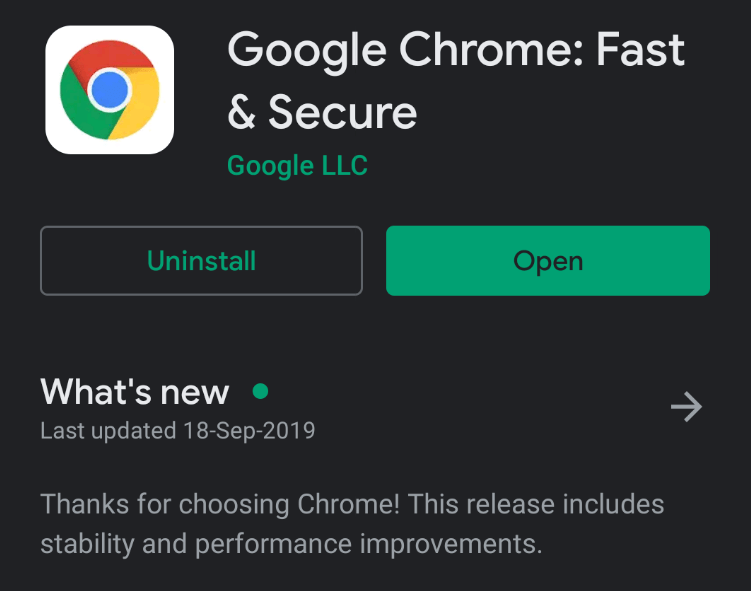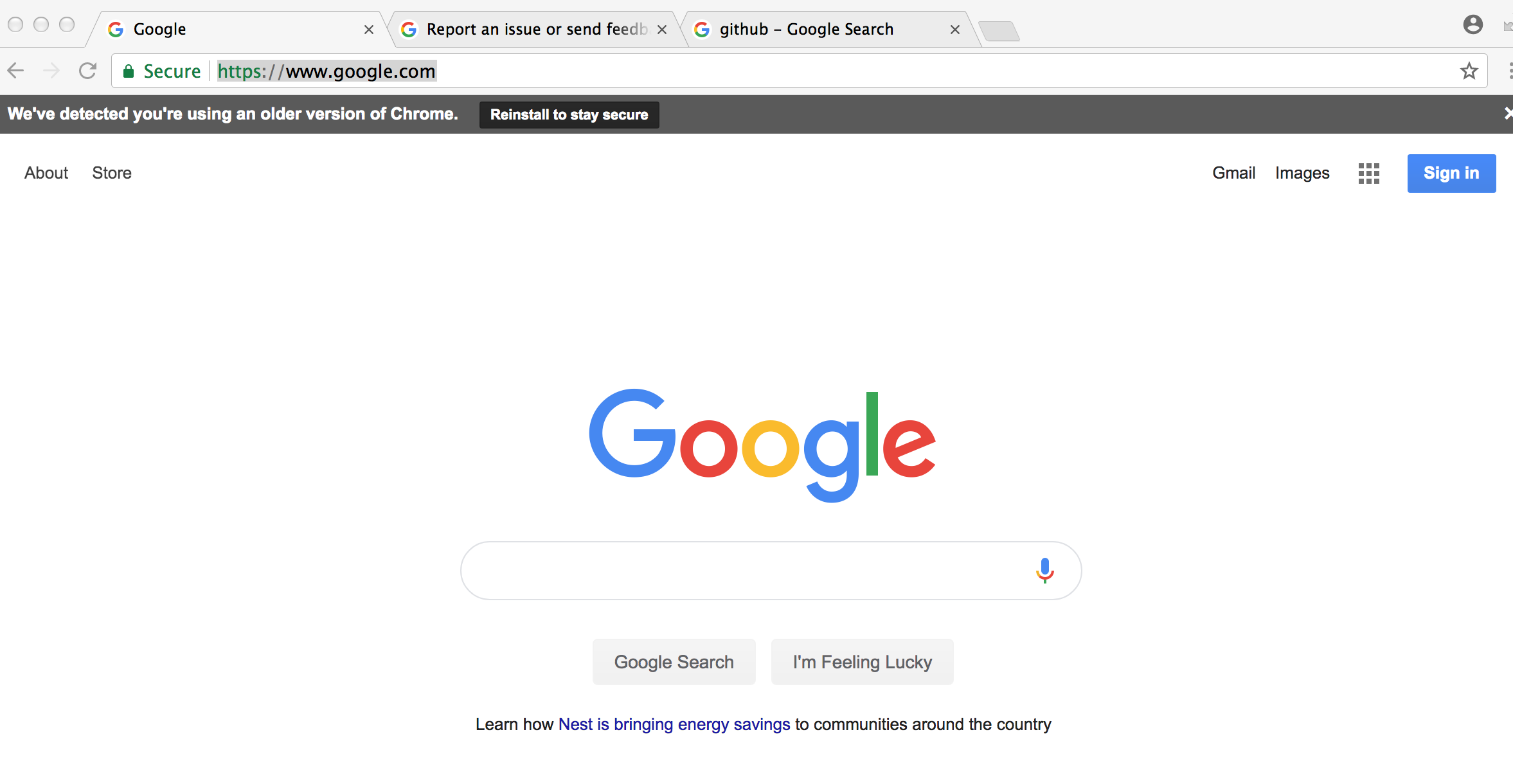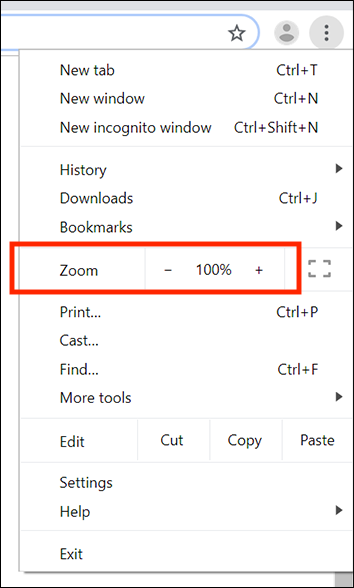Google Chrome For
It’s been a while that I’ve moved from Safari to Chrome on iOS. Google’s browser is pretty good performance-wise, syncs my personal information seamlessly, and features an interface that’s both fun and easy to use. But Chrome's complete inability to block ads does get on my nerves all the time. Too often, I’ve had to fall back to Safari for those ad-ridden sites that won’t allow a normal experience without an ad blocker.
Chrome has everything that you need to make the most of the web, such as quick answers in your address bar, one-click translation and personalised articles for you on your phone. What You’ll Need. First, let’s start off by saying that this entire guide can be done on your Amazon.

Just the other day, I had enough of switching browsers. I browsed the App Store for Chrome-supported ad blockers. Of course, there aren’t any (who am I kidding?). But I didn’t give up. Crawled through various forums looking for workarounds, and to my surprise — I found a way! What you are going to learn isn’t the most convenient of ways to block ads, but let me share it with you so that you can decide for yourself.
AdGuard DNS to the Rescue
My workaround involves using the domain name system (DNS) servers of a popular ad blocking service called AdGuard. It requires nothing overly technical — set up the AdGuard DNS with your internet connection, and you end up filtering IP addresses and trackers related to major ad serving platforms. Pretty cool, huh? And if you were wondering, AdGuard is very open to you using their DNS servers, so it’s not as if you are doing anything wrong.
Just apply the AdGuard DNS to your internet connection, and you end up filtering IP addresses and trackers related to major ad serving platforms
But there’s a catch. Setting up AdGuard DNS servers on your iPhone or iPad blocks ads not just on Chrome, but on every other app as well — consider it as something akin to a system-wide adblocker. So, don’t be surprised to find out certain apps — such as free-to-play games — failing to work properly due to their inability to serve ads, in which case you have to consider resetting the DNS servers.
There’s another problem — iOS only lets you configure DNS servers for Wi-Fi connections. And even then, you need to do that manually for every Wi-Fi connection that you join — although not repeatedly when rejoining the same hotspot. So then, what about blocking ads while surfing on cellular data?
iOS only lets you configure DNS servers for Wi-Fi connections
To circumvent the limitation, I tried using a paid app that claimed to override default DNS settings for cellular data. Looked around even more for an alternative, and stumbled upon an app called DNSCloak that supposedly secures you from DNS spoofing. And to my pleasant surprise, it features a built-in AdGuard DNS server profile that you can use to get rid of ads on both Wi-Fi and cellular completely.
May 12, 2020 Google Chrome is just a browser that combines a minimalist design with advanced technology to make the web faster, safer and easier. This computer software has a plus over its speed and interesting looks. Behind its minimalistic and simple look, Google Chrome has many features which can be equivalent to other modern browser aliases. Chrome OS is the operating system that powers every Chromebook. Do more with apps Chromebooks have access to a vast library of Google-approved apps. Google’s browser is pretty good performance-wise, syncs my personal information seamlessly, and features an interface that’s both fun and easy to use. But Chrome's complete inability to block.
Regardless, I'm not going to forego changing Wi-Fi DNS servers manually. It's risk-free compared to DNSCloak, which may have unknown security concerns that I'll mention while we move along.
Also on Guiding Tech
How to Disable Suggested Articles in Chrome for iOS and Android Without Affecting Search
Read MoreBlocking Ads on Wi-Fi
iOS lets you modify the DNS servers for any Wi-Fi connection quite easily. But as I mentioned earlier, you need to apply it whenever you connect to a new Wi-Fi hotspot — once you’ve configured the DNS servers, the device uses those settings whenever you rejoin the same hotspot.
In my case, I've set up the AdGuard DNS servers for my home Wi-Fi connection, as well as on public networks that I frequent to. And for those other random networks, I either deal with the ads or use DNSCloak if I find them too annoying.
The following steps should walk you through the process required to block ads on a Wi-Fi connection.
Step 1:Mercedes das xentry installation. On the iOS Settings app, tap Wi-Fi. Next, tap the i-shaped symbol next to the connected Wi-Fi network.

Step 2: Tap the option labeled Configure DNS.

Step 3: Tap Manual, and then remove the current DNS servers for your Wi-Fi connection.
Note: Consider noting down or a taking a screenshot of the existing DNS servers just in case you need them for later. However, you can also choose to forget the connection and reconnect to it to revert to the default DNS servers automatically.
Consider noting down or a taking a screenshot of the existing DNS servers just in case you need them for later. However, you can also choose to forget the connection and reconnect to it to revert to the default DNS servers automatically.Step 4: Insert the following AdGuard DNS servers into two separate slots, and then tap Save.
176.103.130.130
176.103.130.131
That’s it. Now it's time to head over to Chrome, load up any site, and enjoy an ad-free experience. I faced no issues while using the AdGuard DNS servers — they blocked nearly every ad that I came across, except for a few sites where I did encounter a few pop-up tabs. But for the most part, it felt refreshing to finally find ads gone from what’s now my favorite browser on iOS.
Also on Guiding Tech
How to Easily Download Any PDF on Chrome for iOS
Google Chrome For Windows 10
Read MoreBlocking Ads with DNSCloak
I was quite lucky to stumble across DNSCloak. It's a completely free app that offers the ability to thwart DNS spoofing. In simpler terms, DNSCloak verifies that there is no tampering with the responses to and from servers that you connect to. The app accomplishes that by using a virtual private network (VPN) profile, which does raise a few hairs.
VPNs, the free ones in particular, may carry certain privacy-related risks. But from the looks of it, I found that the app uses a dummy VPN which loops back connection requests to your iPhone or iPad and resolves them locally. Hence, you shouldn't be too worried in terms of security. However, I recommend that you refrain from using DNSCloak when dealing with sensitive data as a precautionary measure.
DNSCloak uses a dummy VPN which loops back connection requests to your iPhone or iPad and resolves them locally
Regardless, what makes DNSCloak quite special is its inclusion of a pre-built AdGuard DNS profile that enables system-wide adblocking. And thanks to the fact that it funnels all connection requests through the dummy VPN profile. The app not only blocks ads on Wi-Fi connections but also on cellular data. That's great news for Chrome users.
The following steps should walk you through blocking ads with the AdGuard DNS servers using DNSCloak.
Step 1: Download and install DNSCloak from the App Store.
Download DNSCloakStep 2: Launch DNSCloak. You should see a list of DNS filters listed on the main screen of the app. Tap on the one labeled adguard-dns and then tap Use This Server.
Step 3: On the pop-up menu, tap Allow.
Step 4: Use Touch ID or Face ID to authenticate the new VPN configuration.
You can now surf on Chrome without encountering any advertisements on both cellular data and Wi-Fi. Do remember that the same applies to other apps as well.
Note: To deactivate the AdGuard DNS filter, tap Stop Using This Server under adguard-dns.If you want to know that you're actively using DNSCloack while surfing, turn on the Show VPN Icon from the DNSCloak Settings panel. That will make the VPN icon appear on the status bar of your iPhone or iPad. Neat stuff!
While you can use DNSCloak to block ads pretty easily, consider using the manual workaround discussed above for instances where your privacy is of the utmost importance. At the end of the day, you can’t really trust a free app too much regardless of what it claims to be. But when it comes to cellular data, it's DNSCloak or nothing.
Also on Guiding Tech
#How-to/Guides
Click here to see our How-to/Guides articles pageFreedom from Ads
Download Google Chrome For Mac
An ad-free experience on Chrome for iOS finally feels damn liberating. Don’t get me wrong — I’m not against all advertisements. They provide a vital source of revenue for online content creators. My problem is with those annoying pop-up ads that websites shove in your face and you really have no choice. That ruins the browsing experience.
Thankfully, now we have a couple of alternatives like AdGuard DNS and DNSCloak to the rescue. So, what do you think of these workarounds? Any suggestions? The comments section is right below. In the meantime, check out this video that shows how to block ads on iPhone for free.
The above article may contain affiliate links which help support Guiding Tech. However, it does not affect our editorial integrity. The content remains unbiased and authentic.Read Next
Google Chrome For Linux
Should You Use a Sync Passphrase on Chrome?Also See#chrome #adblockDid You Know
MEMS gyroscopes became popular after the launch of the iPhone 4 in 2010.
More in iOS
Reeder vs Unread: Which RSS Feeds ReaderApp Is Better on iPhone
Chrome is a very popular web browser designed to be fast and lightweight. It was developed by Google in order to make surfing the web easier even as technology changes. Chrome has an incredibly minimalist interface with very few buttons or menus. This is intended to maximize the amount of screen space available for displaying websites. The browser even has a full screen mode that removes the address bar and borders. Chrome has quickly become the most widely used browser in the world because of the superior experience it provides.
Chrome has a tabbed interface for people to use. You can easily open up new tabs across the top of the browser to flip between multiple websites. The tabbed interface works seamlessly. The typical address bar has been replaced with something more useful. You can now type a website address in the bar or use it directly to perform searches. You are able to personalize which search engine the browser should use even though it is primarily designed to work with Google.
There is a single menu in the top corner that contains everything from settings to browsing history. Chrome gives you an enormous amount of power when it comes to changing the default settings to meet your personal needs. The browser places a special emphasis on privacy and security. You can open up a private browsing or incognito tab when using the Internet. The incognito mode will not allow cookies, images or other temporary data to be stored on your computer. All of that information will be deleted as soon as you close the tab. Another feature is the ability to create personalized accounts for all users. This means your browsing history and favorites will all be tied to a single account. If someone else wants to use the browser, then that person can make a new account or use a generic login.
A great deal of work has gone into ensuring that Chrome is compatible with most of the common standards in use today. The browser is compatible with a wide range of security and other protocols. It supports the new hypertext markup language version 5, or HTML5. Even some more obscure protocols and web-based scripting languages are natively supported in Chrome. This will enhance your browsing experience by making certain all websites are rendered as intended by the developer or designer.
Google Chrome is in constant development. Updates are released on an almost monthly basis. This can lead to some issues. Minor bugs and inconveniences occur regularly between updates. Most problems are resolved quickly by a large community of developers. Chrome can use thousands of different add-ons and plugins. Those plugins can do everything from blocking annoying advertisements to enhancing support for new languages or widgets. The plugins can be installed with just a single button click through a central repository. The plugins prevent the browser from becoming outdated.
Chrome has become a favorite of people online because it provides one of the smoothest and fastest browsing experiences today. The browser has been streamlined to use as few resources as possible while running. Chrome comes with a feature that allows you to synchronize your browsing information across multiple computers and mobile devices for maximum convenience. An added benefit is that Chrome will actually scan websites before loading them. This allows you to avoid visiting websites that seem to contain malware, viruses or questionable code. Chrome is the premiere option today for anyone who wants a solid web browser.
Pros
- Fast web browsing
- Lightweight and simple design
- Many plugins to enhance the browser
Cons
- Bugs appear from time to time
- Some features require using only Google services